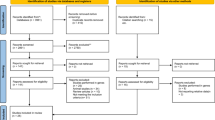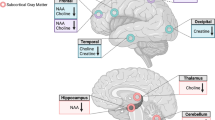Abstract
Chronic alcohol exposure can cause dramatic behavioral alterations, including increased anxiety-like behavior and depression. These alterations are proposed to be due in part to adaptations in the brain regions that regulate emotional behavior, including the bed nucleus of the stria terminalis (BNST), a principal output nucleus of the amygdala. However, to date there have been no studies that have examined the impact of in vivo alcohol exposure on synaptic function in the BNST. To better understand how alcohol can alter neuronal function, we examined the ability of in vivo alcohol exposure to alter glutamatergic transmission in the BNST using whole-cell voltage clamp recordings and biochemistry in brain slices obtained from C57Bl6 mice. Chronic intermittent, but not continuous, ethanol vapor exposure increased temporal summation of NMDA receptor (NMDAR)-mediated excitatory postsynaptic currents (EPSCs). Both electrophysiological and biochemical approaches suggest that this difference is not because of an alteration in glutamate release, but rather an increase in the levels of NR2B-containing NMDARs. Further, we found that ethanol modulation of NMDAR in the vBNST is altered after intermittent alcohol exposure. Our results support the hypothesis that NMDAR-mediated synaptic transmission is sensitized at key synapses in the extended amygdala and thus may be a suitable target for manipulation of the behavioral deficits associated with acute withdrawal from chronic alcohol exposure.
Similar content being viewed by others
Log in or create a free account to read this content
Gain free access to this article, as well as selected content from this journal and more on nature.com
or
References
Barria A, Malinow R (2005). NMDA receptor subunit composition controls synaptic plasticity by regulating binding to CaMKII. Neuron 48: 289–301.
Becker HC, Diaz-Granados JL, Weathersby RT (1997). Repeated ethanol withdrawal experience increases the severity and duration of subsequent withdrawal seizures in mice. Alcohol 14: 319–326.
Breese GR, Knapp DJ, Overstreet DH (2004). Stress sensitization of ethanol withdrawal-induced reduction in social interaction: inhibition by CRF-1 and benzodiazepine receptor antagonists and a 5-HT1A-receptor agonist. Neuropsychopharmacology 29: 470–482.
Breese GR, Overstreet DH, Knapp DJ (2005). Conceptual framework for the etiology of alcoholism: a ‘kindling’/stress hypothesis. Psychopharmacology (Berl) 178: 367–380.
Carpenter-Hyland EP, Chandler LJ (2006). Homeostatic plasticity during alcohol exposure promotes enlargement of dendritic spines. Eur J Neurosci 24: 3496–3506.
Carpenter-Hyland EP, Woodward JJ, Chandler LJ (2004). Chronic ethanol induces synaptic but not extrasynaptic targeting of NMDA receptors. J Neurosci 24: 7859–7868.
Chen WS, Bear MF (2007). Activity-dependent regulation of NR2B translation contributes to metaplasticity in mouse visual cortex. Neuropharmacology 52: 200–214.
Chu B, Anantharam V, Treistman SN (1995). Ethanol inhibition of recombinant heteromeric NMDA channels in the presence and absence of modulators. J Neurochem 65: 140–148.
Erreger K, Dravid SM, Banke TG, Wyllie DJ, Traynelis SF (2005). Subunit-specific gating controls rat NR1/NR2A and NR1/NR2B NMDA channel kinetics and synaptic signalling profiles. J Physiol 563: 345–358.
Follesa P, Ticku MK (1996). NMDA receptor upregulation: molecular studies in cultured mouse cortical neurons after chronic antagonist exposure. J Neurosci 16: 2172–2178.
Funk CK, O’Dell LE, Crawford EF, Koob GF (2006). Corticotropin-releasing factor within the central nucleus of the amygdala mediates enhanced ethanol self-administration in withdrawn, ethanol-dependent rats. J Neurosci 26: 11324–11332.
Gatch MB, Wallis CJ, Lal H (1999). Effects of NMDA antagonists on ethanol-withdrawal induced ‘anxiety’ in the elevated plus maze. Alcohol 19: 207–211.
Georges F, Aston-Jones G (2002). Activation of ventral tegmental area cells by the bed nucleus of the stria terminalis: a novel excitatory amino acid input to midbrain dopamine neurons. J Neurosci 22: 5173–5187.
Griffin 3rd WC, Lopez MF, Yanke AB, Middaugh LD, Becker HC (2009). Repeated cycles of chronic intermittent ethanol exposure in mice increases voluntary ethanol drinking and ethanol concentrations in the nucleus accumbens. Psychopharmacology (Berl) 201: 569–580, e-pub 2008 Sep 13.
Healey JC, Winder DG, Kash TL (2008). Chronic ethanol exposure leads to divergent control of dopaminergic synapses in distinct target regions. Alcohol 42: 179–190.
Hendricson AW, Maldve RE, Salinas AG, Theile JW, Zhang TA, Diaz LM et al (2007). Aberrant synaptic activation of N-methyl-D-aspartate receptors underlies ethanol withdrawal hyperexcitability. J Pharmacol Exp Ther 321: 60–72.
Hoffman PL, Tabakoff B (1994). The role of the NMDA receptor in ethanol withdrawal. EXS 71: 61–70.
Kalluri HS, Mehta AK, Ticku MK (1998). Up-regulation of NMDA receptor subunits in rat brain following chronic ethanol treatment. Brain Res Mol Brain Res 58: 221–224.
Kash TL, Matthews RT, Winder DG (2008). Alcohol inhibits NR2B-containing NMDA receptors in the ventral bed nucleus of the stria terminalis. Neuropsychopharmacology 33: 1379–1390.
Kiefer F, Jahn H, Koester A, Montkowski A, Reinscheid RK, Wiedemann K (2003). Involvement of NMDA receptors in alcohol-mediated behavior: mice with reduced affinity of the NMDA R1 glycine binding site display an attenuated sensitivity to ethanol. Biol Psychiatry 53: 345–351.
Kliethermes CL, Cronise K, Crabbe JC (2004). Anxiety-like behavior in mice in two apparatuses during withdrawal from chronic ethanol vapor inhalation. Alcohol Clin Exp Res 28: 1012–1019.
Koob G, Kreek MJ (2007). Stress, dysregulation of drug reward pathways, and the transition to drug dependence. Am J Psychiatry 164: 1149–1159.
Koob GF (2008). A role for brain stress systems in addiction. Neuron 59: 11–34.
Lister RG (1987). The use of a plus-maze to measure anxiey in the mouse. Psychopharmacology (Berl) 92: 180–185.
Liu J, Asuncion-Chin M, Liu P, Dopico AM (2006). CaM kinase II phosphorylation of slo Thr107 regulates activity and ethanol responses of BK channels. Nat Neurosci 9: 41–49.
Lovinger DM, White G, Weight FF (1989). Ethanol inhibits NMDA-activated ion current in hippocampal neurons. Science 243: 1721–1724.
McNeill RB, Colbran RJ (1995). Interaction of autophosphorylated Ca2+/calmodulin-dependent protein kinase II with neuronal cytoskeletal proteins. Characterization of binding to a 190-kDa postsynaptic density protein. J Biol Chem 270: 10043–10049.
Melendez RI, Hicks MP, Cagle SS, Kalivas PW (2005). Ethanol exposure decreases glutamate uptake in the nucleus accumbens. Alcohol Clin Exp Res 29: 326–333.
Mirshahi T, Woodward JJ (1995). Ethanol sensitivity of heteromeric NMDA receptors: effects of subunit assembly, glycine and NMDAR1 Mg(2+)-insensitive mutants. Neuropharmacology 34: 347–355.
Overstreet DH, Knapp DJ, Breese GR (2002). Accentuated decrease in social interaction in rats subjected to repeated ethanol withdrawals. Alcohol Clin Exp Res 26: 1259–1268.
Philibin SD, Cameron AJ, Metten P, Crabbe JC (2008). Motor impairment: a new ethanol withdrawal phenotype in mice. Behav Pharmacol 19: 604–614.
Philpot BD, Cho KK, Bear MF (2007). Obligatory role of NR2A for metaplasticity in visual cortex. Neuron 53: 495–502.
Philpot BD, Sekhar AK, Shouval HZ, Bear MF (2001). Visual experience and deprivation bidirectionally modify the composition and function of NMDA receptors in visual cortex. Neuron 29: 157–169.
Roberto M, Bajo M, Crawford E, Madamba SG, Siggins GR (2006). Chronic ethanol exposure and protracted abstinence alter NMDA receptors in central amygdala. Neuropsychopharmacology 31: 988–996.
Roberto M, Schweitzer P, Madamba SG, Stouffer DG, Parsons LH, Siggins GR (2004). Acute and chronic ethanol alter glutamatergic transmission in rat central amygdala: an in vitro and in vivo analysis. J Neurosci 24: 1594–1603.
Sessoms-Sikes S, Honse Y, Lovinger DM, Colbran RJ (2005). CaMKllalpha enhances the desensitization of NR2B-containing NMDA receptors by an autophosphorylation-dependent mechanism. Mol Cell Neurosci 29: 139–147.
Sircar R, Sircar D (2006). Repeated ethanol treatment in adolescent rats alters cortical NMDA receptor. Alcohol 39: 51–58.
Spencer SJ, Buller KM, Day TA (2005). Medial prefrontal cortex control of the paraventricular hypothalamic nucleus response to psychological stress: possible role of the bed nucleus of the stria terminalis. J Comp Neurol 481: 363–376.
Strack S, McNeill RB, Colbran RJ (2000). Mechanism and regulation of calcium/calmodulin-dependent protein kinase II targeting to the NR2B subunit of the N-methyl-D-aspartate receptor. J Biol Chem 275: 23798–23806.
Suvarna N, Borgland SL, Wang J, Phamluong K, Auberson YP, Bonci A et al (2005). Ethanol alters trafficking and functional N-methyl-D-aspartate receptor NR2 subunit ratio via H-Ras. J Biol Chem 280: 31450–31459.
Tang YP, Shimizu E, Dube GR, Rampon C, Kerchner GA, Zhuo M et al (1999). Genetic enhancement of learning and memory in mice. Nature 401: 63–69.
Valdez GR, Roberts AJ, Chan K, Davis H, Brennan M, Zorrilla EP et al (2002). Increased ethanol self-administration and anxiety-like behavior during acute ethanol withdrawal and protracted abstinence: regulation by corticotropin-releasing factor. Alcohol Clin Exp Res 26: 1494–1501.
Walker DL, Davis M (2008). Role of the extended amygdala in short-duration versus sustained fear: a tribute to Dr. Lennart Heimer. Brain Struct Funct 213: 29–42. E-pub 2008 Jun 5.
Wang J, Carnicella S, Phamluong K, Jeanblanc J, Ronesi JA, Chaudhri N et al (2007). Ethanol induces long-term facilitation of NR2B-NMDA receptor activity in the dorsal striatum: implications for alcohol drinking behavior. J Neurosci 27: 3593–3602.
Xu M, Chandler LJ, Woodward JJ (2008). Ethanol inhibition of recombinant NMDA receptors is not altered by coexpression of CaMKII-alpha or CaMKII-beta. Alcohol 42: 425–432.
Yashiro K, Philpot BD (2008). Regulation of NMDA receptor subunit expression and its implications for LTD, LTP, and metaplasticity. Neuropharmacology 55: 1081–1094.
Yashiro K, Corlew R, Philpot BD (2005). Visual deprivation modifies both presynaptic glutamate release and the composition of perisynaptic/extrasynaptic NMDA receptors in adult visual cortex. J Neurosci 25: 11684–11692.
Zhao MG, Toyoda H, Lee YS, Wu LJ, Ko SW, Zhang XH et al (2005). Roles of NMDA NR2B subtype receptor in prefrontal long-term potentiation and contextual fear memory. Neuron 47: 859–872.
Acknowledgements
This work was supported by NIH grants K99AA017668 (TLK), U01AA015635 (DGW), 5T32MH065215 (AJB), and RO1MH63232 (RJC), and a UNCF-Merck Postdoctoral fellowship (AJB). The authors would like to thank all the members of the Winder lab for helpful suggestions, specifically Zoe McElligott and Heather Gosnell for their comments on previous versions of the manuscript.
Author information
Authors and Affiliations
Corresponding author
Additional information
DISCLOSURE/CONFLICT OF INTEREST
The authors declare that, except for income received from primary employers, no financial support or compensation has been received from any individual or corporate entity over the past 3 years for research or professional service and there are no personal financial holdings that could be perceived as constituting a potential conflict of interest.
Rights and permissions
About this article
Cite this article
Kash, T., Baucum, A., Conrad, K. et al. Alcohol Exposure Alters NMDAR Function in the Bed Nucleus of the Stria Terminalis. Neuropsychopharmacol 34, 2420–2429 (2009). https://doi.org/10.1038/npp.2009.69
Received:
Revised:
Accepted:
Published:
Issue date:
DOI: https://doi.org/10.1038/npp.2009.69
Keywords
This article is cited by
-
Sex differences in stress-induced alcohol intake: a review of preclinical studies focused on amygdala and inflammatory pathways
Psychopharmacology (2022)
-
Pituitary adenylate cyclase-activating polypeptide (PACAP) modulates dependence-induced alcohol drinking and anxiety-like behavior in male rats
Neuropsychopharmacology (2021)
-
BNST specific mGlu5 receptor knockdown regulates sex-dependent expression of negative affect produced by adolescent ethanol exposure and adult stress
Translational Psychiatry (2021)
-
Ethanol-induced conditioned place preference and aversion differentially alter plasticity in the bed nucleus of stria terminalis
Neuropsychopharmacology (2019)
-
Bidirectional and long-lasting control of alcohol-seeking behavior by corticostriatal LTP and LTD
Nature Neuroscience (2018)



